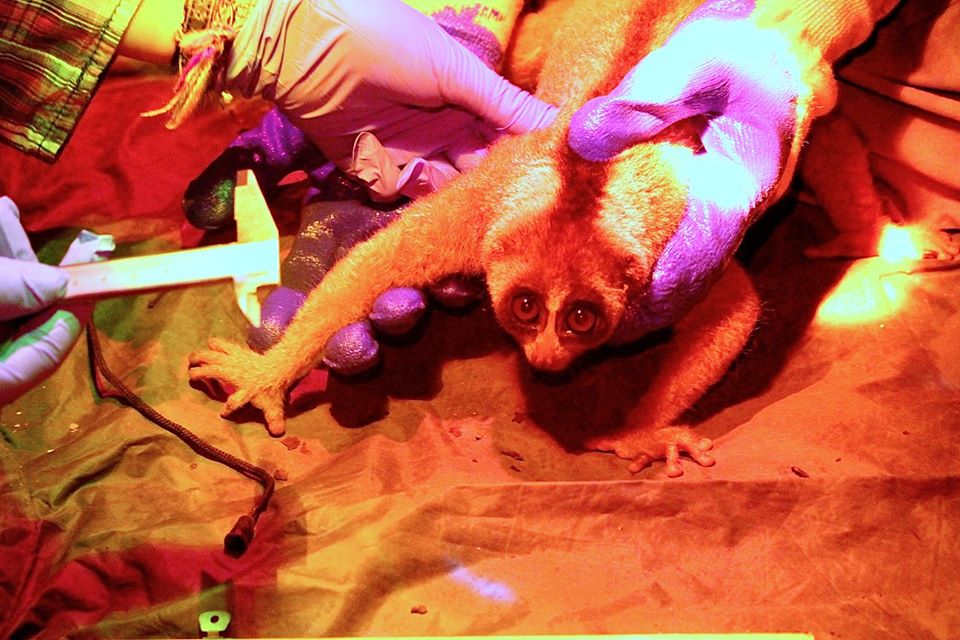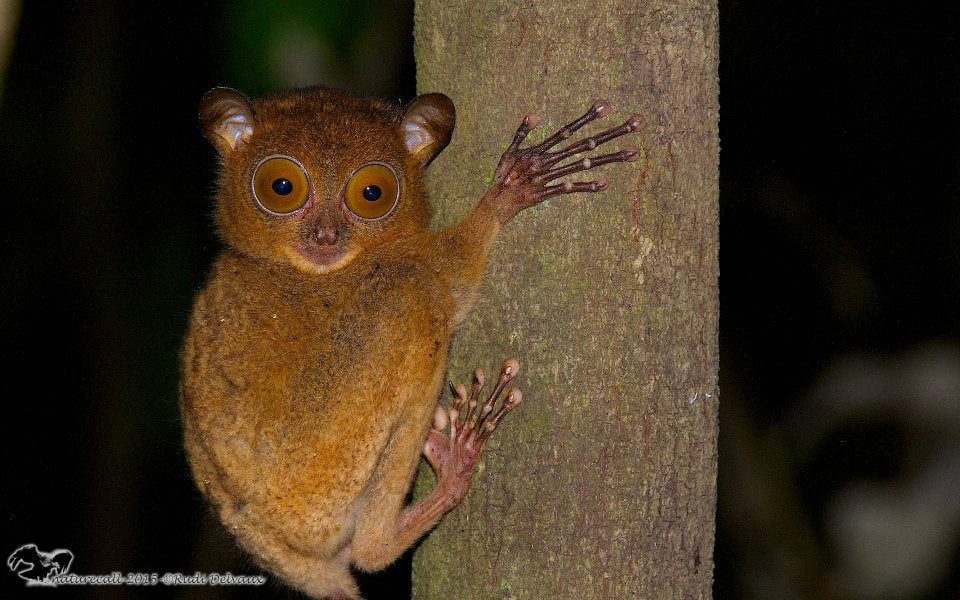Establishing the Home Range, Behavioural Ecology and Habitat Use of the Philippine Slow Loris (Nycticebus menagensis) and the Bornean Tarsier (Cephalopachus bancanus borneanus)
About
Project Leader: Danica Stark
Research Questions:
- What is the pattern of habitat use for the Philippine slow loris and Bornean tarsier? Are there any differences between sexes in habitat use?
- What are the social structures of these primates?
- What is the dietary strategy of the loris and tarsier?
Methods:
Tarsiers and lorises were hand-captured opportunistically. Animals were measured in situ, and a small radio collar was fitted to suitable animals. Once the collar was fitting comfortably, they were immediately released to the tree, where they were caught. Using the VHF tracking system, sleeping sites of the collared slow lorises and tarsiers were found every day, and the trees were marked in order to record re-use and return rates of sleeping trees, as well as to allow characteristics of the sleeping site area to be recorded at a later time. Nocturnal ranging behaviour was collected by following collared individuals for 6-hour shifts (18:00-00:00 and 00:00- 06:00), recording the individual’s behaviour and location at set intervals. Environmental conditions were also recorded. Head torches with white light were used to locate the animals due to their reflective eye shine. Once the animal was spotted, red filters were preferred, as studies indicate that red lights are less disturbing (Nekaris et al., 2008).
The outcome of this project provided baseline data for the Philippine slow loris and Bornean tarsier in Sabah, particularly in the Lower Kinabatangan Wildlife Sanctuary (LKWS), which included the population status, habitat use, diet, social organisation, and behaviour. This information was passed to the local wildlife authority (Sabah Wildlife Department) to design effective management plans for the slow loris and the tarsier populations. The information gathered was used to support the continuous habitat protection and sustainable extraction of natural resources and land use.

The Philippine slow loris (Nycticebus menagensis) ©DGFC

